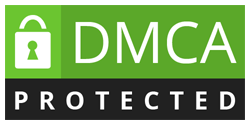NR533 week2 TP
Respond
EXPERIENCE
The demographics at the CVAMC is a wide mix of veterans. We have different levels of service connection, privately insured patients as well as many patients with no other forms of insurance, and a high rate of homeless veterans. As discussed in the first touchpoint, many of the patients rely on Medicare and the federal government benefits gained through active military service to pay for their healthcare. With a shared governance delivery system, the VA encourages the patient to have an active hands-on approach with their healthcare, placing the veterans and their families at the forefront of decision making. While this is easy for the VA to state, its not as easier to perform to the standards, as the constraints of federal funding may pose hinderance on the quality or type of care the veteran may receive. Currently, the VA uses a volume-based reimbursement system. As stated previously, it is difficult to navigate the VA reimbursement system, as there are so many different rules and regulations. There are even regulations on what Medicare (one of the top reimbursements) can reimburse for. The VA isnt allowed to receive Medicare payment for the treatment of nonservice-connected medical conditions on enrolled Medicare-eligible veterans, even if their health care is routinely covered under Medicare (American Legion, 2011). This simple rule is one of many that makes it difficult to place the VA under simply the value or volume-based reimbursement system, but yet, shows that it is appropriate to use a mix of the two in order to be the most fiscally responsible in billing and reimbursement funding.
REFLECTION
The type and quality of care provided at the VAMC should still be at the optimal level, regardless of where the funding is coming from. In order to achieve excellence in patient outcomes, the organization must adhere to and follow the mission, vision, and values. Consistently remembering that the organization exists because of the veterans and their service to our nation is something that can be easily forgotten or overlooked, but is the most important aspect of this business. Following the American Nurses Credentialing Centers (ANCC) model for magnet recognition will also be an excellent guide to increasing patient outcomes while maintaining fiscal responsibility. Excelling in transformational leadership, structural empowerment, exemplary professional practice, learning new knowledge, innovation, & improvements will lead to empirical quality results (American Nurses Credentialing Center (ANCC), (n.d)).
Strategic management will make goals and objectives for clinical service, determine the resources needed to be allocated to achieving those goals and objectives, and will establish policies for getting and using resources. Strategies that take into account incentives and responsibilities faced by the veterans who receive care and the payors that reimburse for that care are important to consider when developing relationship building with providing availability to different types of care at the VAMC (Finkler, Jones, & Kovner, 2013).
IMPLICATIONS FOR THE FUTRUE
Erroneous colorectal cancer screening is a major fiscal hindrance. Proper screening is an absolute must for facilities to decrease expenditures. The average cost for colonoscopies as a screening tool is almost four times the amount of a FIT/FOBT test. Patients that are average or low-risk with no family history should be screened with a FIT/FOBT test for cost effectiveness for both the facility and the patient. Actual costs of clinical services are highly dependent on the ability to negotiate payment rates with providers, therefore making the actual cost of the clinical services dependent on the provider supply. Colorectal cancer screening programs incur substantial non-clinical costs, regardless of whether the program is colonoscopy- or FOBT/FIT-based (Subramanian et al., 2017).
Correct colorectal cancer screening will help eliminate incorrect costs for the CVAMC and the patients. Even though it is a federal government facility, many patients still pay out of pocket expenses and must submit charges to their private insurance companies. Appropriate colorectal cancer screening will eliminate erroneous use of staffs time and the facilitys resources. Proper colorectal cancer screening will also eliminate stress for the patients and assist with the proper education to the patients. Adjustments such as teaching methods or timeframes for education of the providers will have to be routinely evaluated, along with the amount of staff available to implement this project.
“Looking for a Similar Assignment? Get Expert Help at an Amazing Discount!”

"Looking for a Similar Assignment? Get Expert Help at an Amazing Discount!"


